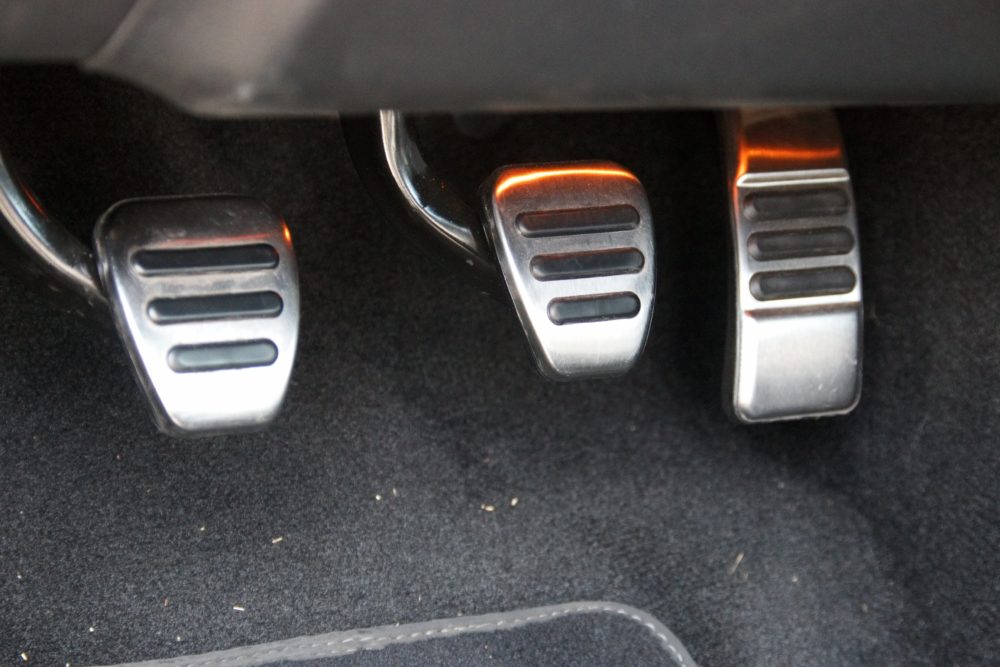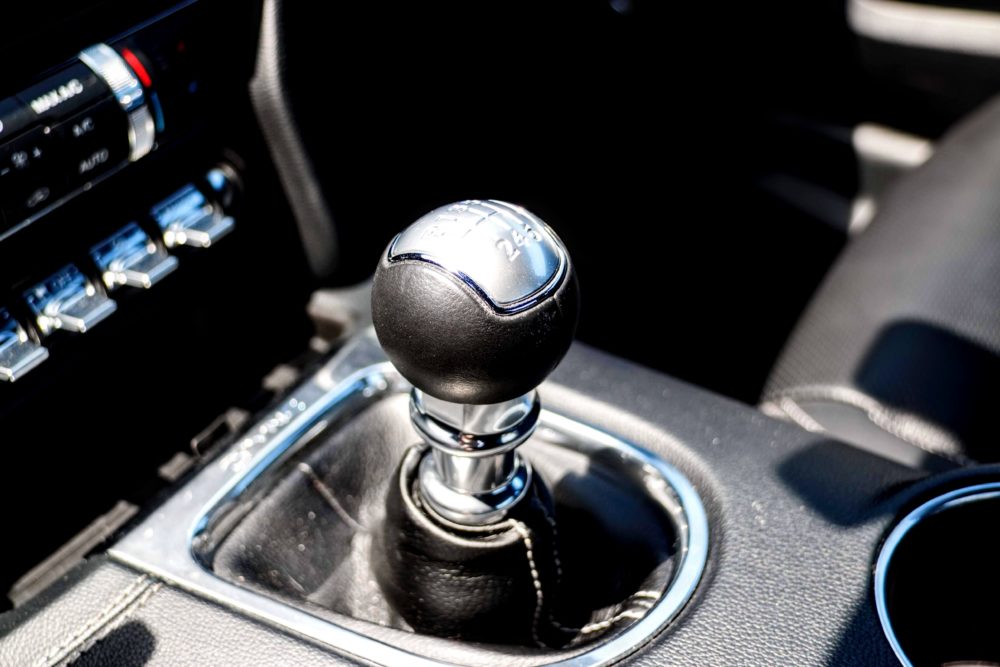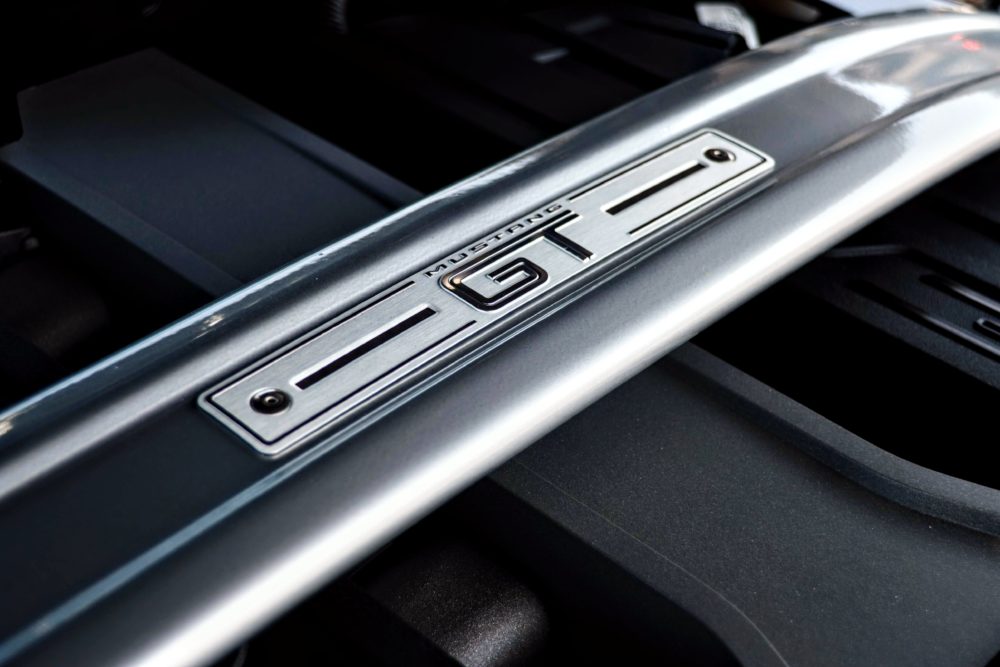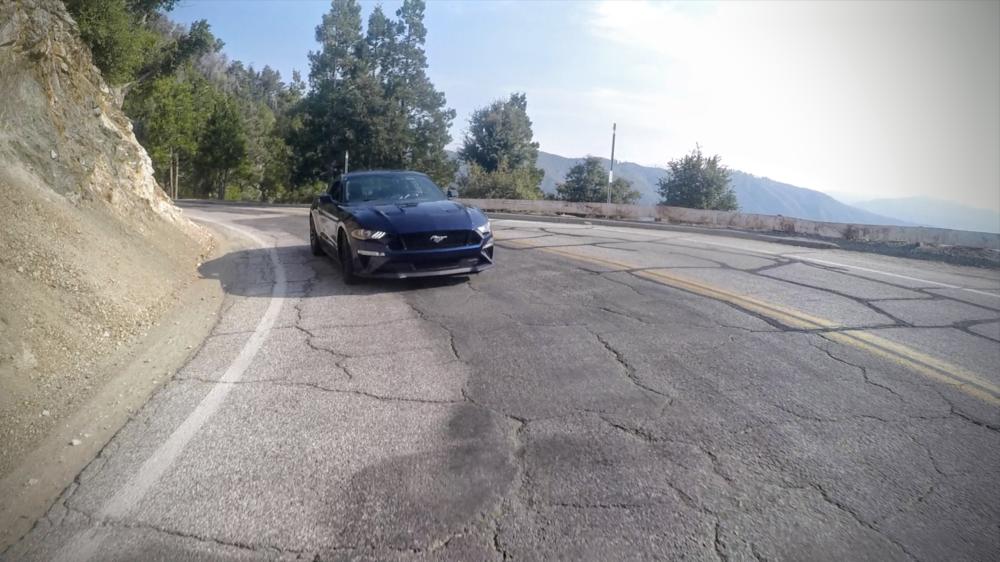Performance Pack 1 Mustang GT Manual: Budget GT350 in Hibernation?
Clutch & Transmission
Now that we have purged all of the vehicular lust we have for this pony, it’s time to get serious about the performance. The 5.0 Coyote motor is truly a godsend for the Mustang GT; it has incredible, naturally-aspirated 460 horsepower and is incredibly durable for up to 1,000 more. It’s hardy, sounds fantastic when exhaling through the exhaust, and it actually sips on gas better than its competitors. And while you feel like the toughest guy on the block when you blast out of an intersection from a stoplight, the clutch plays tough guy as well.
It’s well-known that one of the first “day one” mods people do on manual S550s is replace the clutch spring, or clutch altogether. The reason for this is simple: depressing the pedal is tougher than chewing on fibrous beef jerky. I’ve driven plenty of stick shifts in my life. But this was the first time in a long time where it took me quite a while to get used to a clutch’s biting point, as it is in the last 10 to 15 percent of the of the pedal’s travel.

Because it is so heavy and springy, you often need to use your entire leg to properly shift from first to second, however it becomes progressively easier while shifting to higher gears. Granted, the latest version of the MT-82 is loads better than the late S197 versions, but it still has its issues. The stock gear shifter has long throws, but isn’t bad per se.
‘For what it’s worth, this car is absolutely perfect for cruising and for little skirmishes here and there. But in order to be truly competitive, the MT-82 simply needs to go. Put a Tremec TR6060 with either one of the Performance Packages and you basically have a budget Shelby on your hands.’
However, when those long throws are mated with the wide spacing of the transmission itself, it feels like an eternity before you can shift to the next gear. Sure, it’s got the Torsen 3.73 diff, which is obviously better in performance than the auto GT’s 3.53 gears, but the MT-82 nearly makes that a moot point. Rev matching while downshifting with the stock clutch is also challenging, as you risk quite a bit of lurch if you haven’t gotten the muscle memory down just yet.
Drunk with Power
Despite all of this, the manual GT’s powerband is significantly better than the automatic. The low end is incredibly brutal, making for a wild, power-decadent ride no matter how you slice it. All of the issues listed above are during normal driving conditions, and are virtually non-existent during drag races.
From an average of three digs, we were able to go from 0-60 in about 4.5 seconds on the flattest, cleanest road we could find. In its weight class, this car is no slouch by any means, of course. But it’s not its straight-line performance that makes the Mustang GT so special at this point. It’s the phenomenal handling it possesses while carving those risque corners that makes it a cut above the rest.
Angeles Crest Canyon Run
Performance Package 1 comes with many goodies but MagneRide isn’t one of them, unfortunately. Luckily, our GT was indeed installed with it, and while it is essentially a luxury to have, it makes a world of difference on the road no less.
In true Los Angeles fashion, we chose Angeles Crest Highway in La Canada Flintridge for all of our corner-carving cravings. The tuned, adaptable suspension sternly nixes nearly all the notable body roll you’d expect going 65 miles per hour into a sketchy corner. And yet, you still feel all the acceptable lateral Gs from the dampers forcibly shoving the sticky tires onto the pavement. Smooth and sporty.
continued…



